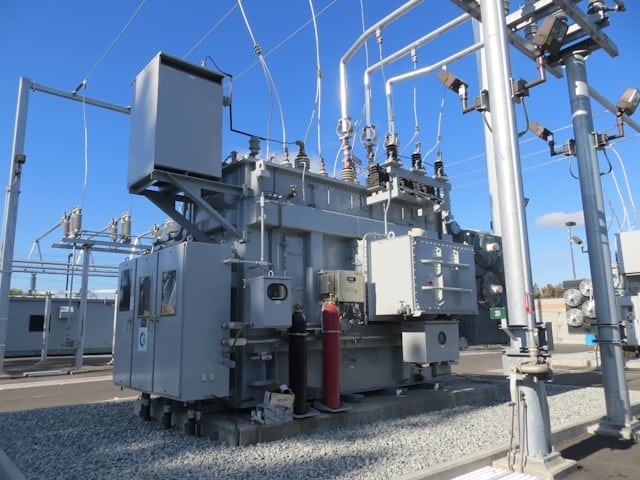How Are Solid-State Batteries Shaping the Future of Electric Vehicle Energy Storage?

As consumers, we are witnessing an electrifying revolution in the automobile industry, with electric vehicles (EVs) becoming the new normal. EVs are powered by batteries, specifically lithium-ion batteries, which have been the standard for many years. However, a new form of battery technology, known as solid-state batteries, is emerging and promises to bring unprecedented changes to the energy storage in electric vehicles. This article explores how solid-state batteries are transforming the future of EV energy storage.
The Drawbacks of Current Lithium-Ion Batteries
In recent years, lithium-ion batteries have proved indispensable in powering electric vehicles. However, these batteries are not without their drawbacks. Despite continuous improvements, lithium-ion batteries face several challenges, such as safety issues, limited energy density, and lengthy charging times.
Dans le meme genre : What Are the New Frontiers of AI in Enhancing Space Exploration Missions?
Lithium-ion batteries utilize a liquid electrolyte that facilitates the movement of ions between the anode and cathode. Unfortunately, this liquid electrolyte is flammable and can pose a safety risk, especially in cases of thermal runaway or battery damage. Additionally, the energy density of these batteries is limited, meaning the amount of energy they can store relative to their size is not as high as we would like. This directly impacts the driving range of electric vehicles. Finally, these batteries still require significant time to charge, making long-distance travel in electric vehicles a bit of a challenge.
The Advent of Solid-State Batteries
Enter solid-state batteries: a promising technology that addresses many of the drawbacks of lithium-ion batteries. Unlike their lithium-ion counterparts, solid-state batteries use a solid electrolyte instead of a liquid one. This key difference has a profound effect on the performance and characteristics of the battery.
A lire aussi : Can Machine Learning Identify Plant Species and Health from Aerial Imagery?
The use of solid electrolytes eliminates the risk of leakage and flammability associated with liquid electrolytes. They also allow for the use of different electrode materials which can significantly boost the energy density of the battery. In essence, solid-state batteries can store more energy in the same space than conventional lithium-ion batteries.
Moreover, solid-state batteries exhibit an impressive charging speed. The movement of ions within a solid electrolyte is more efficient, thus, the charging process is substantially faster. This rapid charging capability is a significant advantage for electric vehicles, potentially enabling them to be recharged in a matter of minutes, not hours.
Solid-State Batteries: The Key to Enhanced Safety
One of the most promising aspects of solid-state batteries is the increased safety they offer. The solid electrolyte used in these batteries is not flammable, removing the safety concerns that come with liquid electrolytes.
Furthermore, solid-state batteries are less likely to experience thermal runaway, a condition where the battery overheats and can potentially explode. This is due to the inherent stability of the solid electrolyte, which remains stable even under extreme conditions. This enhanced safety is particularly crucial for electric vehicles, where any failure in the battery can have catastrophic consequences.
Increasing Energy Density with Solid-State Technology
The energy density of a battery is a critical factor for electric vehicles, determining their driving range. The higher the energy density, the longer an electric vehicle can run on a single charge.
One significant advantage of solid-state batteries is their ability to use lithium metal as an anode material. Lithium metal has a much higher capacity than the graphite used in lithium-ion batteries, leading to a substantial increase in energy density. This means that solid-state batteries can potentially offer much longer driving ranges for electric vehicles.
Moreover, the solid electrolyte allows for thinner separators between the anode and cathode, further increasing energy density. This could result in electric vehicles that not only drive further on a single charge but also are lighter and more efficient.
The Future of EV Charging: Speed and Efficiency
Charging time is a crucial aspect for the wider adoption of electric vehicles. With lithium-ion batteries, charging an electric vehicle can take several hours, a significant inconvenience for drivers.
Solid-state batteries, however, promise to change this. The solid electrolytes in these batteries allow for faster ion movement, which translates into much quicker charging times. Some experts suggest that solid-state batteries could be fully charged in as little as 10 minutes.
This improvement in charging time will not only make electric vehicles more convenient to use but will also help address the issue of charging station availability. Faster charging times mean shorter waiting times at charging stations, allowing more electric vehicles to be charged per day.
As solid-state batteries continue to mature and become more commercially viable, they hold the potential to revolutionize the way we think about energy storage in electric vehicles. With their increased safety, higher energy density, and faster charging times, these batteries are paving the way for a more efficient, reliable, and sustainable future of transportation.
Advancing Renewable Energy Storage through Solid-State Batteries
While the conversation around electric vehicles largely focuses on their direct impact on reducing carbon emissions, it’s worth noting the transformative potential of solid-state battery technology in the renewable energy sector.
The renewable energy industry is making strides in harnessing power from sustainable sources such as wind, solar, and hydropower. However, a significant challenge lies in energy storage. Storing renewable energy efficiently and safely is crucial to ensuring a consistent power supply when the sun doesn’t shine or the wind doesn’t blow.
Here’s where solid-state batteries come into play. By virtue of their high energy density and enhanced safety profile, these batteries can offer a more efficient and reliable solution for storing renewable energy.
The higher energy density of solid-state batteries means they can store more power in a smaller space, making them an ideal fit for renewable energy storage systems. Moreover, their inherent safety features, including the non-flammable solid electrolyte, make them a safer choice for large-scale energy storage applications. This means a lower risk of fires or explosions in energy storage facilities.
In addition, the faster charging times of solid-state batteries could make them more efficient at absorbing and releasing energy, which is a key requirement for effective energy storage. This feature could come in handy in managing fluctuations in renewable energy production and consumption.
The application of solid-state batteries in energy storage could pave the way for more widespread and efficient use of renewable energy, making a significant contribution to a sustainable future.
Conclusion: Solid-State Batteries and the EV Revolution
In conclusion, the introduction and evolution of solid-state battery technology are proving to be a game-changer for the electric vehicle industry and beyond. By addressing the key limitations of traditional lithium-ion batteries, solid-state batteries promise to bring significant improvements in safety, energy density, and charging times.
The non-flammable, solid electrolyte in these batteries not only increases their safety profile but also enables the use of lithium metal, which significantly boosts their energy density. This translates into longer driving ranges for electric vehicles and more efficient energy storage options for the renewable energy sector.
In addition, the faster ion movement in solid-state batteries enables quicker charging times, reducing the inconvenience associated with the long charging periods of traditional lithium-ion batteries. This could contribute to increased acceptance and adoption of electric vehicles among consumers.
While solid-state batteries are still in their development phase, the progress made so far is promising. As the technology matures and becomes more commercially viable, we can look forward to a future of electric vehicles that are safer, more efficient, and capable of traveling longer distances on a single charge.
The revolution in electric vehicle energy storage is well underway, and solid-state batteries are leading the charge. The future of transportation is looking increasingly electric and sustainable, and we have solid-state batteries to thank for that.
